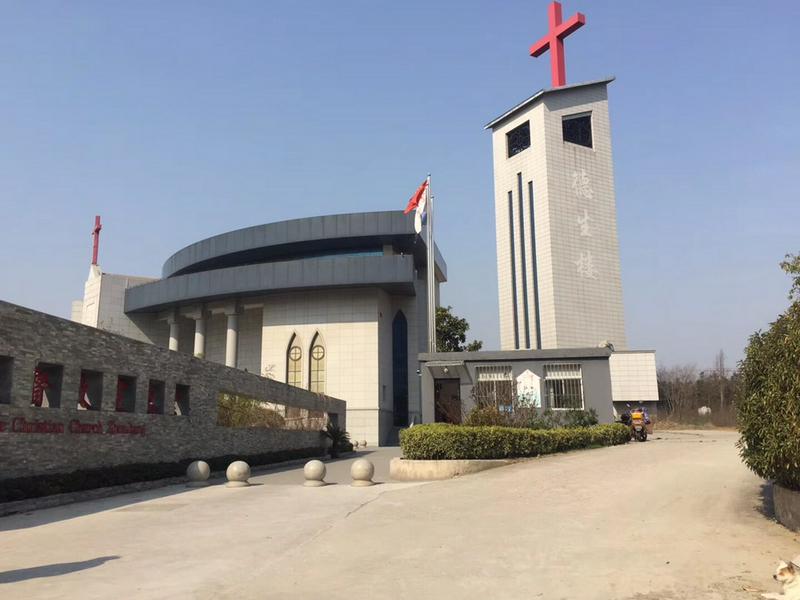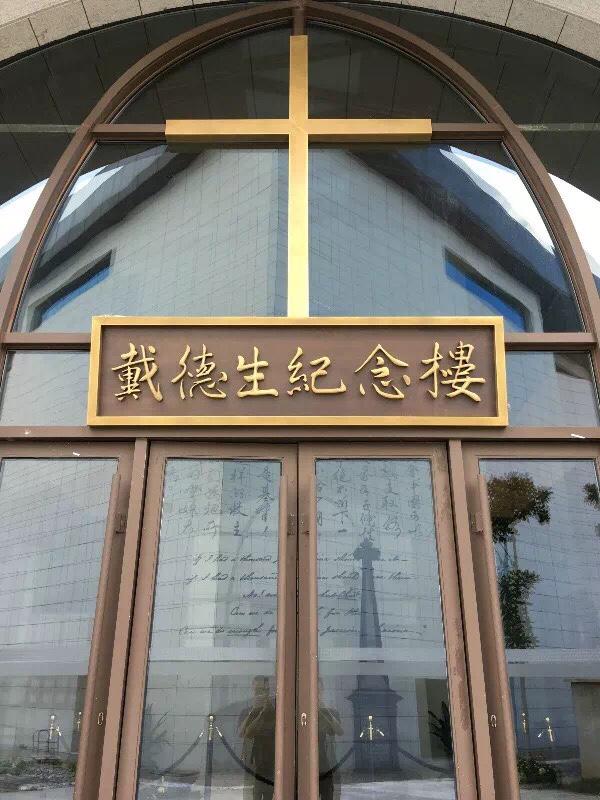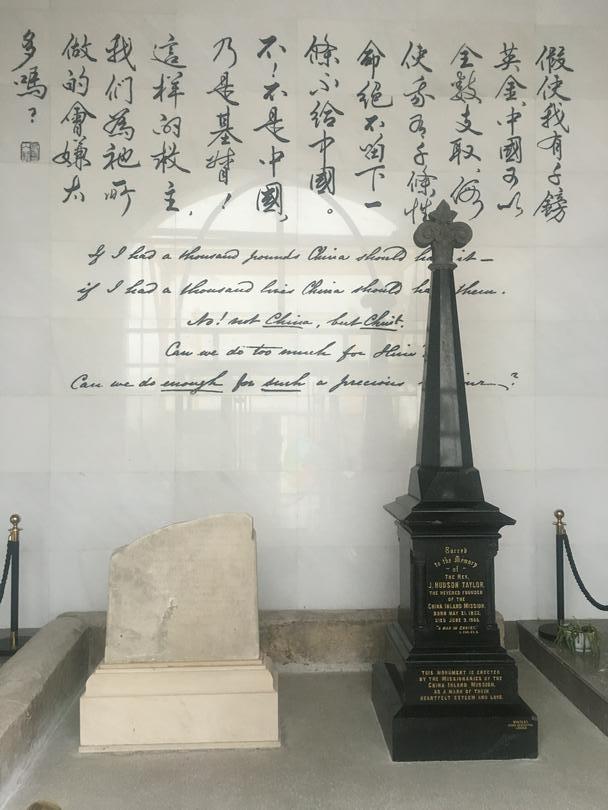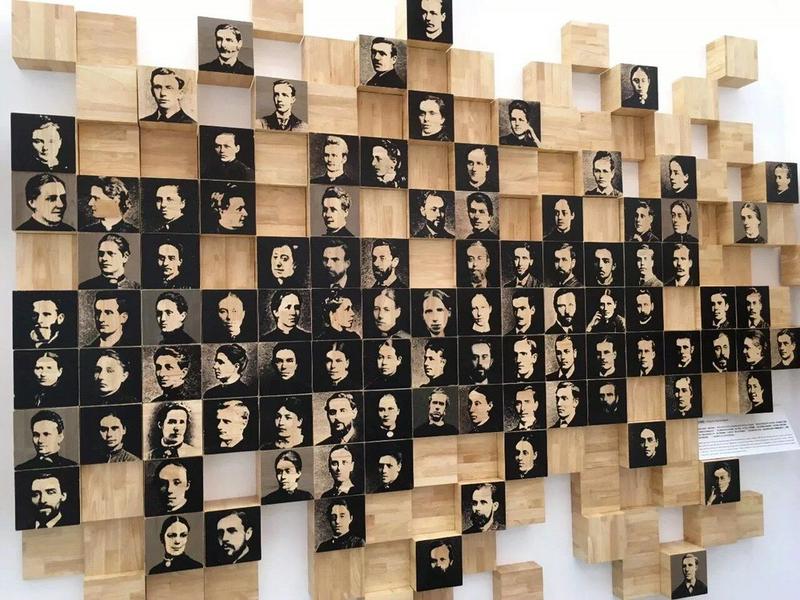"If I had a thousand pounds, China should have it; if I had a thousand lives, China should have them." This is Hudson's most famous saying, but it is little known that there is a sentence in the letter, "Were the whole realm of nature mine, that were an offering far too small."
On June 5, 2018, the Hudson Taylor Memorial Building was opened in Zhenjiang, Jiangsu province, where the great missionary is buried. In the past one year and some, Christians have visited the site on a nearly daily basis. They have come to the place of their spiritual ancestor who lived there about one hundred years ago and it has reinvigorated their souls.
James Hudson Taylor was the founder of the China Inland Mission who, beginning in 1853, dedicated his life to the mission work in China. In 1905, the British missionary died in Changsha and his coffin was carried back to Zhenjiang. And according to his wishes, he was buried next to his first wife, Maria Dyer Taylor, and their four stillborn children in a cemetery of Zhenjiang.
On August 28, 2013, the graves of Hudson Taylor and Maria Taylor were relocated to the cemetary at the Zhenjiang Hudson Taylor Memorial Church, also known as the Xuande Church. A building was also built to mark this prominent missionary.
Entering the building I saw two tombstones and Hudson Taylor's famous saying: "If I had a thousand pounds, China should have it; if I had a thousand lives, China should have them."
There was a story about the two tombstones. In 1988, James Hudson Taylor III, Hudson's grandson, his wife, and Rev. Hu Shihui from a church in Zhenjiang found Hudson's gravestone intact at the site of the former British Consulate in Zhenjiang. It reads, "Sacred to the memory of the Rev. J. Hudson Taylor, the esteemed founder of the China Inland Mission, born May 21, 1832, died June 3, 1905. "A man in Christ." (2 Cor. 12:2)" The gravestone was then returned to the Gospel Church in Zhenjiang.
Brother Yu, who led the visit, said that Taylor's tombstone was damaged into seven pieces during the Cultural Revolution. Two parts were still missing when it was back at Gospel Church. Fortunately the missing parts were found during the preparation for the construction of the Hudson Taylor Memorial Building.
In 2012, the tombstone of Maria Taylor was found by a Taiwan businessman in an antique market. He purchased it and brought it back to Taiwan. There he took a photo of it and uploaded the photo onto the Internet. The Taiwanese wife of Hudson's Taylor great-great-grandson James Hudson Taylor IV confirmed that it was the tombstone of Maria. Coincidentally, the Taiwan businessman also attended the inauguration ceremony of the Hudson Taylor Memorial Building and said that he had become a Christian.
James Hudson Taylor IV was involved in the design of the building and funded its construction. He left four the Chinese characters "Weidu Jidu" ("by Christ alone" in English) at the entrance door to avoid Christians exalting the missionary too highly.
The foundation of the tomb has settled. With a width of 3.8 meters and length of 4 meters, the tomb weighs around 50 tons. Around the edges are many decorative ears of corn which symbolizes a kernel of wheat from the verse, "a kernel of wheat that dies produces many seeds". A Chinese style tombstone was erected at the site at the time of the commemoration of the 30th anniversary of Hudson Taylor's death. Herbert Hudson Taylor, Hudson's eldest son attended the event and wrote the words, "By faith he still speaks, even though he is dead".
Brother Yu told me that he would come here when feeling weak in his ministry or displeased with life. "I felt like it restored my strength," he said.
Apart from having a basement, the building has two storeys. The first storey includes an introduction to Hudson Taylor and an exhibition hall showing Christianity in Zhenjiang. The second storey tells of the work of the China Inland Mission, including education, disaster relief, opium resistance, medical work, evangelism and church planting, ministry to ethnic minorities, training of Chinese co-workers and women's work.
The right half records how the Mission Society called on God's children to join it's work through prayer, how also with the help of prayer it carried out evangelistic work in different areas of China, and how it overcame difficulties by the Lord's help. Individuals noted included the Cambrige Seven and James Outram Fraser.
- Translated by Karen Luo
















